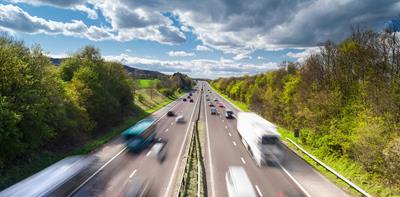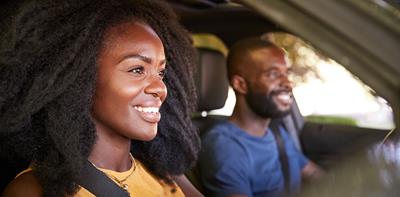
Defensive driving is the name given to a series of simple driving techniques that reduce your risk of being involved in an accident.
So, what does being a defensive driver actually mean?
Keep your distance
Other drivers can be unpredictable, so defensive driving focuses on reducing the chances of their mistakes affecting you and your vehicle.
A good starting point is to keep a healthy distance between your car and the vehicle in front. This way you will have plenty of time to react should they do something unexpected.
It’s also important to leave a decent amount of room when passing parked cars ‒ not every driver or passenger will remember to look before opening their car door.
Drive to the weather ‒ not the speed limit
Some drivers think of the speed limit as a target to reach - or even exceed - as quickly as possible. In doing so, they may not pay enough attention to the weather conditions, which can lead to accidents.
If it’s wet or icy, defensive drivers will drop their speed. This gives them better control of their car, should another driver get into trouble as a result of the weather conditions.
Look further ahead
Watching the car in front is good practice for all drivers.
But defensive driving entails looking further ahead as well. That way, you get a head start on reacting to hazards further up the road, such as merging lanes or a broken down car.
Look all around you ‒ not just in your mirrors
All drivers should regularly check their mirrors, and this is a key part of defensive driving. As well as having a good idea of what’s ahead of you, you need to keep an eye on vehicles approaching from behind, too.
But that isn’t enough, as hazards can come from all angles. So, familiarise yourself with your car’s blind spots, and get into the habit of checking them before each manoeuvre.
No £25 admin fee
When you update your policy online, e.g. amend driver, address or car details.
Expect the unexpected
There’s only one driver whose habits and skills you can truly predict, and that’s you. All other drivers have the potential to do the unexpected, so it’s important that you are prepared to react.
While it may be going too far to say that you can’t trust other road users, you can never tell what bad habits or distractions might affect another driver’s ability behind the wheel.
Defensive driving is about forward planning and being ready to react when something unexpected happens on the road.
Keep your focus
To really know what’s going on around you on the roads, then you need to remove any distractions.
While that may not always be possible if you have kids in the car, many distractions can be limited; avoiding playing around with the radio or the air conditioning is a good start.
Staying focused on long drives can be tiring. So regular stops to refresh yourself and take a break from that intensive concentration are highly recommended.
Research your route
Before setting off, look up the tricky parts of your route on your satnav or walk yourself through them on Google Maps Street View.
Knowing which exit you need to take on a motorway or which lane to get in at a busy junction can help build your confidence on an unfamiliar route.
Make sure other drivers notice you
While you can’t anticipate how other drivers will behave, ensuring that you’re visible to other road users can reduce the chances of an accident significantly.
That means giving them space so they can see you in their mirrors. It also means being clear and prompt with any signalling, and making use of your headlights when visibility drops. Checking your vehicle regularly to make sure everything is working properly helps, too.
Dealing with aggressive drivers
Whether it’s tailgating, cutting you up or refusing to give way, it’s easy to let other road users get under your skin.
But defensive driving teaches you that if you encounter an aggressive driver, the best and safer way to deal with it is to simply let them pass and get away from you.
Go to Solved to read more about driving, the rules of the road and road safety.

